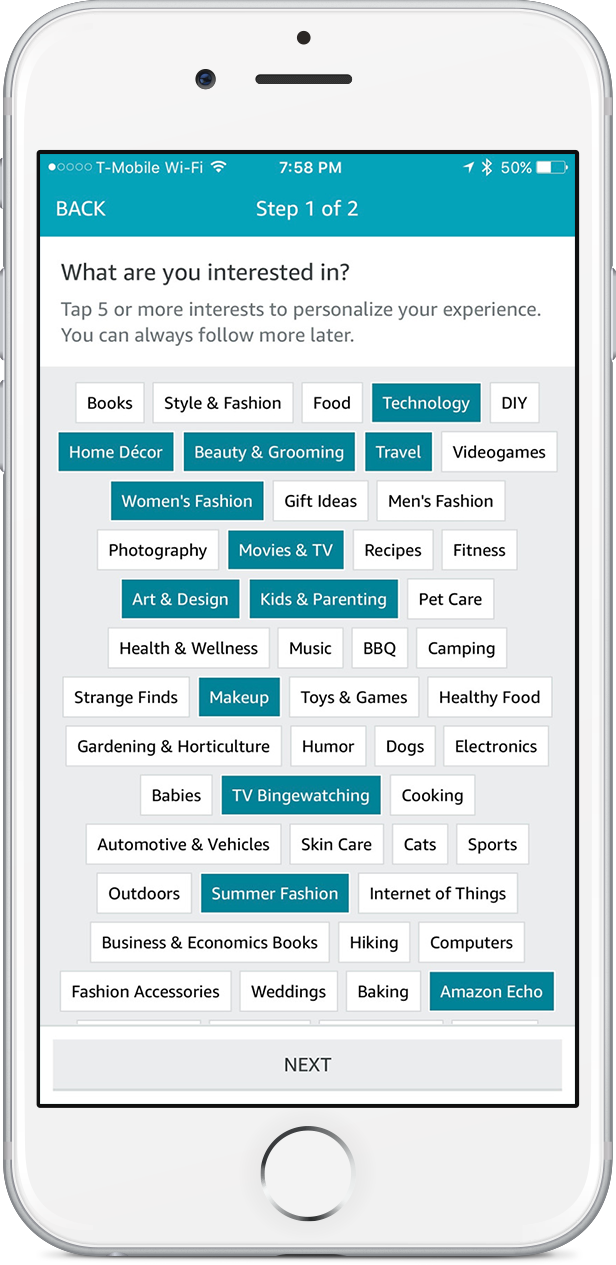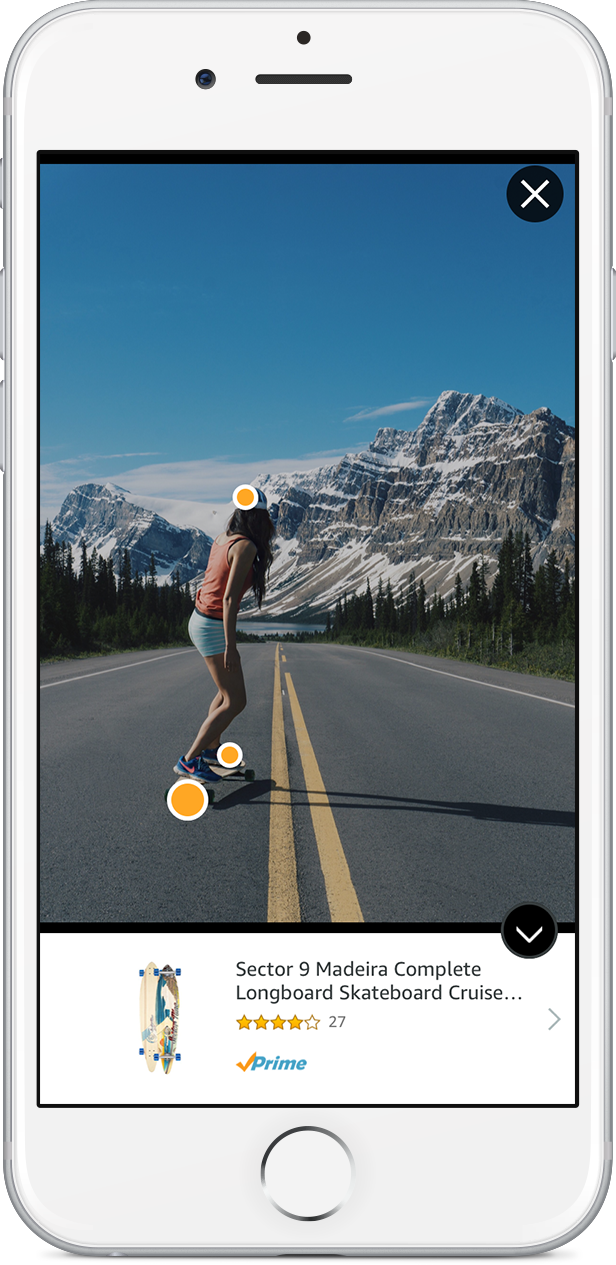Amazon Spark
Spark is a platform aimed at helping customers discover products and find inspiration from a community of people that share common interests. Spark’s main feature is a personalized feed of customer generated content related to interests. My role was to explore ways to encourage the discovery of interests. I was extremely lucky to have had the opportunity to join the team right before launch and to follow along the journey.
My timeline was 12 weeks long. I started off by gathering existing research and working with the user researcher to learn the best approach to conducting interviews. I also worked closely with the product team to learn about the constraints and better understand the platform. I explored and shared my solutions with the design team, but also presented to the larger team to receive feedback. My favorite part was developing the interactive prototype of my final solution.



Key Takeaways
Each person has valuable knowledge to offer.
I would always learn from talking to people, even from other teams or specializations. I worked with the user researcher and learned how to ask better questions. I also learned from the product team how to design around constraints because not all situations are ideal. Each person plays an essential role and has a bundle of knowledge to offer, so it's important to always be curious.
Make informed design decisions.
Design choices must be backed up by reason. Every choice you make should be deliberate. Good UX design stems from empathizing with the user, so it is extremely important to do research. Use data and analytics to better understand the user. You should always have an answer to why you made a design choice.
Designing for a large ecosystem.
Amazon is large and complex. You have to make sure that your design makes sense in the flow of the larger ecosystem. For example, when using a certain UI pattern, you have to make sure it is in line with those of other sections of Amazon. Your button shouldn't hold a different function than it already does in an existing part of the Amazon app.
Design for accessibility.
When working on a product that is used by millions of people around the world, it is crucial to consider accessibility. I was more cautious of the colors, text sizes, and contrast ratio in my designs.
If you have any questions about my internship at Amazon, feel free to email me at [email protected]!
A big thank you to the most wonderful team I could ever ask for!

KATHLEEN HUANG
UI / UX / Visual Design


